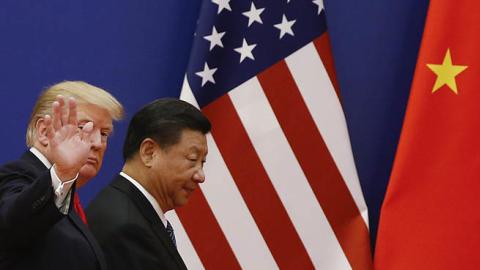President Trump’s aggressive economic pressure has helped bring Chinese President Xi Jinping to the negotiating table. But as the two presidents prepare to meet Friday in Buenos Aires, it would be a mistake for American negotiators to imagine that tariff measures and more commodity purchases will be enough to secure a worthwhile deal with Beijing. The real threat from China is much deeper than anything reflected in the bilateral balance-of-payments ledger.
The threat lies in China’s commitment to a mercantilist economic model and in particular its well-funded, top-down, multifaceted program to surpass the U.S. and its allies in the development of key technologies. This includes subsidies, forced technology transfers and closed internal markets, violating many World Trade Organization treaty obligations. The U.S. and its allies will need to mount a coordinated effort to raise the costs of Chinese defiance while providing Beijing with plausible opportunities to make a deal without appearing to bow to U.S. pressure.
In recent months the Trump administration has begun laying the groundwork for a more unified China policy, working with traditional U.S. allies. In the first year of his term, the president was at loggerheads with Europe as well as Japan, Canada, Mexico and other Pacific Rim partners. Since then, his team has closed deals with South Korea, Canada and Mexico, entered into trade negotiations with the European Union and Japan, and generally reduced, though hardly eliminated, frictions with these allies.
The administration also has filed trade actions with the WTO earlier this year against China’s blatant violation of intellectual-property rules, winning support from Japan and the European Union. Advancing a process for WTO reform has also brought together the U.S., Japan and the EU. This latter initiative is crucial since much of China’s strategy for building new national-champion companies involves newer, digital-age industries, which are inadequately covered or uncovered by existing WTO rules. When China massively subsidizes these industries, uses nontariff barriers and competition policy to favor state-owned enterprises and local industries, and attempts to dominate the setting of international standards for new technologies, the rest of the world must be able to respond.
A September Defense Department report underscores the urgency of challenging Chinese technology policy. The report identifies some 300 U.S. and allied technologies, supply chains and production capabilities that are vulnerable to control by competitor nations such as China and Russia. Germany, France, the United Kingdom, Japan and other U.S. allies are also concerned by the economic threat from subsidized Chinese companies to their key industries, such as automobiles, robotics, communications equipment and semiconductors. The common threat from China provides ample incentive for cooperation among traditional U.S. allies.
If the U.S. and China are to make a deal in Buenos Aires, it will need to be politically palatable for both the wary Chinese and the sometimes-impulsive U.S. president. It should include three parts: First, China should purchase a basket of U.S. goods—grains, liquefied natural gas and health-care products have been suggested—and reduce some tariffs on products like autos, on which Beijing maintains high, asymmetric barriers to U.S. exports.
Second, both nations must agree to adjudicate Chinese intellectual-property violations, technology transfers and subsidization through the normal WTO process. The U.S. would use its own legal system to address outright intellectual-property theft and protect sensitive technologies.
Third, they should commit to accelerate WTO reforms to bring new issues under its jurisdiction, even if it requires nonunanimous arrangements like those enacted in 1996 to cover the emerging technology sector. The second and third steps would obviously take time to succeed, but they would bring allies along for the process and considerably enhance the incentives for China to continue negotiating in a serious way.
The U.S. also will have to make concessions, including suspending the immediate threat of new or more-severe tariffs on Chinese products. This would allow President Xi to save face and claim the Trump administration had moderated its demands and backed down. The Chinese also could see a return to WTO processes and a pullback from unilateralism as a win, since they want to be perceived as supporters of the multilateral trading system.
It is in the economic interests of the world’s two largest economies to back away from the brink. Recent reports on investment and manufacturing production suggest the U.S. economic recovery, boosted as it has been by Mr. Trump’s tax and regulatory reforms, may now be slowing. The slowdown could worsen if House Democrats are remotely successful in imposing their agenda. More tariffs certainly wouldn’t help, and the U.S. economy would feel the impact of Chinese countermeasures.
China, for its part, is already experiencing decelerating growth—perhaps more than we know—and would suffer greatly from a third round of U.S. tariffs. Europe, with its fragile economies and political situations, cannot afford a global recession. The motivation for a deal is there. All sides need to show some political will and flexibility.
Mr. Duesterberg is a senior fellow at the Hudson Institute.




















